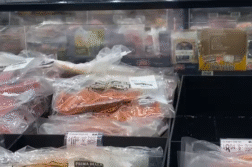MIAMI, Fla. (Ivanhoe Newswire) – Holiday parties are right around the corner and for many women that means stepping out in high heels! But studies have found the foot fashion can lead to back and knee pain and more! See how one doctor is helping her patients survive those heels and feel great!
Like many women, despite the pain, Cindy Gersham refuses to give up her heels!
“Weddings, Bar Mitzvahs, Bat Mitzvahs … usually I just wear them, I deal with the pain,” Gersham told Ivanhoe.
But according to podiatrist Elizabeth Scheiber that can lead to a lot of problems.
“Hammertoes, maybe a neuroma, pain, blisters on your feet,” Dr. Scheiber said.
Even osteoarthritis in the knees! A high heel lover herself Dr. Scheiber came up with a plan for her patients at Cleveland Clinic Florida.
“So I have 5 minute shoes, 30 minute shoes, and all day shoes,” Scheiber said.
First – the 5 minute shoe: to wear out to dinner when you plan to be sitting!
“You can see my metatarsal is 90 degrees to the ground … it’s as if you’re walking on your knuckles, there’s no fat pad supporting the ball of your foot,” she explained.
Then there’s the 30 minute shoe.
“You can see that the heel is a little lower than this shoe, it’s a little wider… there’s not as much pressure on the ball of the foot,” she said.
And last but not least – the all-day shoe!
“It’s got a stacked heel so you can wear this all day and look professional and look fun,” she said.
Dr. Scheiber says the worst shoe to wear is flats.
Scheiber told Ivanhoe, “Your lower back is going to be painful and your foot has to work harder to walk.”
Gresham admits she prefers her comfortable walking shoes but is happy she doesn’t have to give up her heels.
“For special occasions like going out to dinner I truly think that heels are here to stay,” she said.
Shoe-a-holics rejoice!
Another tip from Dr. Scheiber after a lengthy night in heels: use a frozen water bottle and roll it along the ball of your foot for about ten minutes. She says it will work like an anti-inflammatory. She also says as we age out feet get longer so have your foot re-sized the next time you go shoe shopping. For more information please visit http://www.thespinehealthinstitute.com/news-room/health-blog/how-high-heels-affect-your-body
FOR MORE INFORMATION ON THIS REPORT, PLEASE CONTACT:
Arlene Allen-Mitchell
(954) 659-5000
allena@ccf.org
Sources: http://www.thespinehealthinstitute.com/news-room/health-blog/how-high-heels-affect-your-body http://www.thespinehealthinstitute.com/news-room/health-blog/how-high-heels-affect-your-body http://www.thespinehealthinstitute.com/news-room/health-blog/how-high-heels-affect-your-body
Contributor(s) to this news report include: Janna Ross, Producer; Judy Reich, Videographer and Roque Correa, Editor.
To receive a free weekly email on Smart Living from Ivanhoe, sign up at: http://www.ivanhoe.com/ftk



